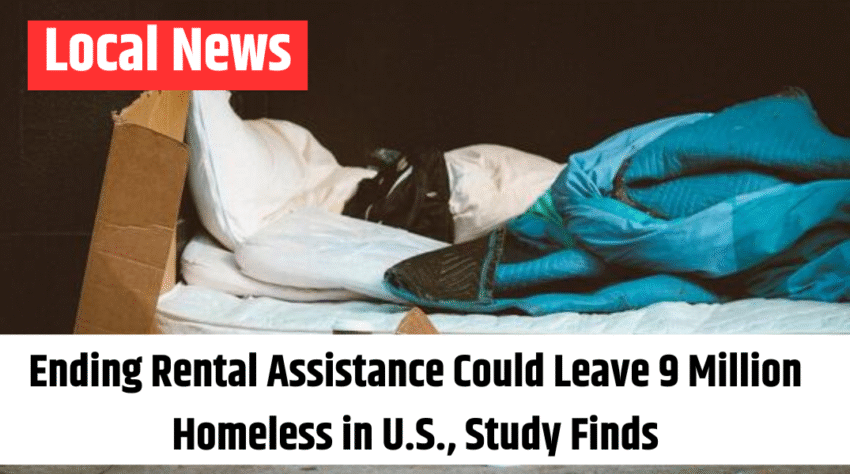A new analysis by the National Alliance to End Homelessness warns that up to 9 million people in the U.S. could be at risk of homelessness if federal rental assistance programs overseen by the U.S. Department of Housing and Urban Development (HUD) are eliminated.
The Alliance highlights that although HUD’s programs currently provide essential rental support to millions, only one in four eligible households actually receives aid due to chronic underfunding. “Despite limited resources, communities have prioritized helping older adults, individuals with disabilities, and workers earning extremely low incomes,” the report states. “Reducing or eliminating this support would seriously destabilize vulnerable households and harm the communities where they live. Lawmakers must recognize this risk and ensure these programs are fully funded and expanded to meet the growing need.”
Full Elimination of Programs Deemed Unlikely
While the potential consequences outlined are severe, the Alliance noted that a complete shutdown of HUD’s rental assistance programs is not expected. However, they cautioned that any funding reductions could still have a painful impact.
The analysis, conducted by the Homelessness Research Institute using HUD’s own Office of Policy Development and Research data, focused on individuals receiving support through Public Housing, Section 8, Section 202, Section 811, and Housing Choice Vouchers. It did not include residents of permanent supportive housing, other long-term housing efforts, or those in properties supported by preservation programs like Section 236 or moderate rehabilitation initiatives.
Mapping the Potential Effects Across the U.S.
To better illustrate the possible impact, the Alliance released an interactive map showing how potential cuts could affect each state. According to the Alliance, more than 9 million Americans currently benefit from HUD-administered subsidy programs.
Also Read – Former Kentucky Secretary of State Alison Lundergan Grimes Prevails in Ethics Appeal
“The analysis clearly shows that even smaller cuts would force many people out of their homes, increasing their risk of homelessness,” the Alliance said. Although the organization does not expect extreme cuts, they stress that even moderate reductions could have devastating effects.
Keeping People Housed is More Cost-Effective
The Alliance emphasizes that preventing homelessness is not only more humane but also more cost-effective than dealing with its aftermath. “Homelessness leads to cycles of emergency shelter use, hospital visits, and other costly services,” the analysis explains. “Maintaining individuals in stable housing saves money and improves overall community well-being.”
A new analysis by the National Alliance to End Homelessness warns that up to 9 million people in the U.S. could be at risk of homelessness if federal rental assistance programs overseen by the U.S. Department of Housing and Urban Development (HUD) are eliminated.
The Alliance highlights that although HUD’s programs currently provide essential rental support to millions, only one in four eligible households actually receives aid due to chronic underfunding. “Despite limited resources, communities have prioritized helping older adults, individuals with disabilities, and workers earning extremely low incomes,” the report states. “Reducing or eliminating this support would seriously destabilize vulnerable households and harm the communities where they live. Lawmakers must recognize this risk and ensure these programs are fully funded and expanded to meet the growing need.”
Full Elimination of Programs Deemed Unlikely
While the potential consequences outlined are severe, the Alliance noted that a complete shutdown of HUD’s rental assistance programs is not expected. However, they cautioned that any funding reductions could still have a painful impact.
The analysis, conducted by the Homelessness Research Institute using HUD’s own Office of Policy Development and Research data, focused on individuals receiving support through Public Housing, Section 8, Section 202, Section 811, and Housing Choice Vouchers. It did not include residents of permanent supportive housing, other long-term housing efforts, or those in properties supported by preservation programs like Section 236 or moderate rehabilitation initiatives.
Mapping the Potential Effects Across the U.S.
To better illustrate the possible impact, the Alliance released an interactive map showing how potential cuts could affect each state. According to the Alliance, more than 9 million Americans currently benefit from HUD-administered subsidy programs.
“The analysis clearly shows that even smaller cuts would force many people out of their homes, increasing their risk of homelessness,” the Alliance said. Although the organization does not expect extreme cuts, they stress that even moderate reductions could have devastating effects.
Keeping People Housed is More Cost-Effective
The Alliance emphasizes that preventing homelessness is not only more humane but also more cost-effective than dealing with its aftermath. “Homelessness leads to cycles of emergency shelter use, hospital visits, and other costly services,” the analysis explains. “Maintaining individuals in stable housing saves money and improves overall community well-being.”
